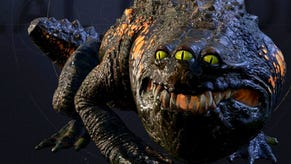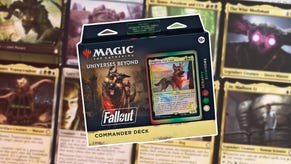Zen and the Art of the Art Book: The Close Relationship Between Udon and the Video Game Industry
How Udon Entertainment gives the super fan insight into a game’s production.
This article first appeared on USgamer, a partner publication of VG247. Some content, such as this article, has been migrated to VG247 for posterity after USgamer's closure - but it has not been edited or further vetted by the VG247 team.
Fandom in gaming circles is a curious beast. Unlike the modern "geek culture" that’s packaged and sold by movie mega franchises, the history of video games has lived and died on long-running series and spinoffs that rarely age out.
Sure, we’ve definitely shed our tears over the Valkyria Chronicles and Breath of Fires that have withered and faded over the past few years, but even those dearly departed series had not only their share of fans, but also piles of production design, promotional art, and lore to analyze by their once-ravenous fan base. Every fan of every game wants to dig deeper into its world, and the game itself is sometimes never enough.
And lo, the art book was born; an artifact for the super fan that can chronicle the conceptual phases, the marketing campaigns, and innermost thoughts and ideas from a game or series’ design staff. Good art books, even those with a smaller number of pages, manage to pull all of these off in one fell swoop. For budding artists, they’re a look behind the character design curtain. For world-building enthusiasts, they’re the lost ark of what never made it into the final product.
But they’re also still fairly uncommon, and make them remain a badge of honor for those Dark Souls and SNK true believers. In Japan, art books have been promotional and even newsstand items since the late 1980s. Here in the West, it still takes some work to track many of them down. While the more popular annualized Western franchises receive the art book treatment these days, this is only as recent as the last console generation. Many are published by the series’ own developers, making the breadth of output a bit niche among the niche.
Born as a Canadian art studio in the early 2000s, Udon scored the publishing rights to Street Fighter franchise, and quickly went to work with a new comic book series at a time when most thought the fighting game genre was a relic of the 1990s arcade ruins. The comics found a fanbase, and after some initial success, it was time for something of a calculated gamble.
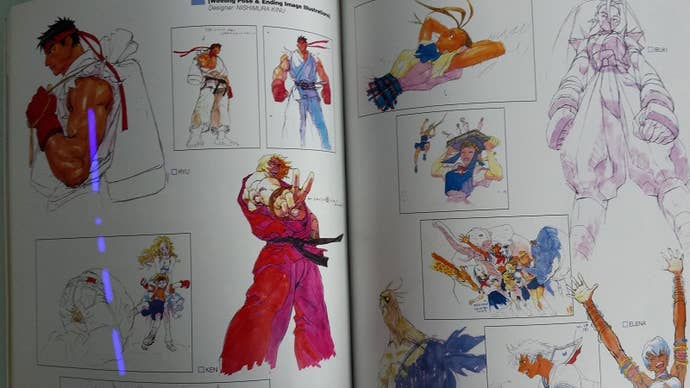
"The first art book we published Street Fighter: Eternal Challenge, a book made at that time for the 15th anniversary of Street Fighter," says Matt Moylan, Udon’s Director of Publishing. "It was a natural extension of our Street Fighter comics line, and also something of an experiment to see if the comic fans would extend their interest to art book." Eternal Challenge was a learning experience, but a successful one. While Capcom had released a series of books in Asia that bound a variety of sketch, production, and promotional art in them, none of them official made it to the west without tracking down an importer and paying the hefty fees that came with them.
Eternal Challenge panned out for the small publisher in two significant ways. One, it strengthened the relationship that Udon had with Capcom, which still thrives to this day. Two, it opened up the doors to a more diverse range of games and franchises for them to take a shot at publishing. "Initially with Eternal Challenge it was just something else to try," says Moylan. "After that book did well it did become a more planned effort to diversify both our product offerings and properties. We picked up some other Capcom art books for games like Okami and Mega Man Zero, as well as various Street Fighter manga." Some of the manga had never been localized in English, something else to diversify their output.
"From there," he continues, "it wasn’t too long before we started picking up art books from other game companies and studios - SEGA, Atlus, Nippon Ichi, Platinum, Bandai, Blizzard, and others. And then from there we diversified more with anime and manga art books."
These days, Udon publishes a range of books from the various Capcom properties like Darkstalkers and Okami to Atlus’ Persona series, all of which have vocal and insatiable fans. Still, the art book game comes with its share of challenges. In particular, the afore-mentioned underground status they still seem to have in the West. Moylan says that "[probably] the biggest challenge is getting the word out to each audience. Sometimes, we know the audience is there but not how to let them know about the art book. So it always helps when the North America publisher of a game helps us promote the books."

But there have been groundswell successes, and they can come straight from the fans. "Often it is the fans themselves that help get the word out, especially when it’s a franchise that doesn’t get much love in the West. The Valkyria Chronicles art books are a great example where the fans embraced the English book release. Even though the third game in the series has never been released in English, the fans really came out to support our first two VC art books and let us know they also wanted to see the third book localized. In the end, The Valkyria Chronicles 3 art book has had very little drop off compared to the first two books, so we’re happy we listened to fans on that one!"
But the fans are only one aspect of what’s brought over from a Japanese publisher to a wider audience in the western hemisphere. Often times, choosing the right intellectual property at the right time for the right crowd can also be a tough call. When asked about the process, Moylan offered a glimpse into how Udon makes those decisions:
"Choosing what specific books to publish is a mix of our own knowledge and researching what the communities for different properties are like. The popularity of a game is rarely the deciding factor on whether we want to localize an art book. More important is how devoted the fanbase is, as well as the quality of the artwork itself. This is why you’ll actually find Okami at the top of our best-selling art book list."
He continues, "[we] are lucky that as we’ve built up some great relationships with Japanese publishers, so sometimes they will let us know about books even before they’re published in Japan. But still, a lot of the time it’s just researching what Japanese books are coming out soon, either online or in person with our editor in Japan."
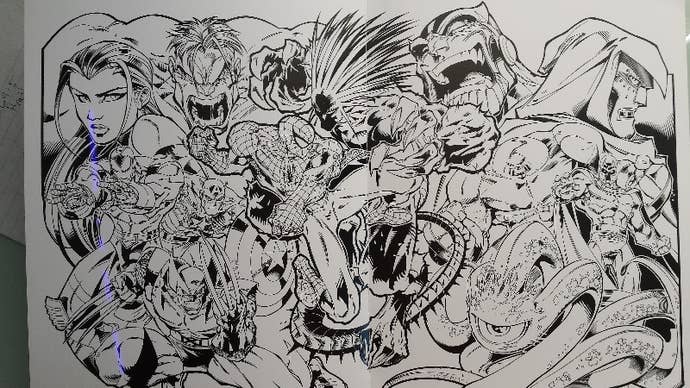
But the vast majority of what Udon publishes is still licensed work from game publishers, and compiling that kind of work into books that they make themselves can also be a herculean task. "Often we have to sort through massive amounts of repetitive art files to find every individual piece of art we need," he says. "And even then sometimes the art just doesn’t exist anymore."
Moylan even gives an anecdote: "The Marvel VS Capcom: Official Complete Works book for example – there was a piece of artwork by Joe Madureira used for the cover of Marvel Super Heroes that no one was able to find. We talked to Capcom, we talked to Joe Mad, and nobody had a copy of it. The saving grace was inker Tim Townsend, who after 15+ years had still held on to a pretty clear photocopy of the inked artwork. He scanned that and we cleaned it up for inclusion in the book, woot!"
Some of the best parts of a game’s art book is seeing what wound up on the cutting room floor. When asked if publishers are little territorial about these things and if they’re harder to come by that people realize, Moylan told me the opposite is often true, and that game publisher aren’t usually shy about publishing unused concepts and unused ideas.
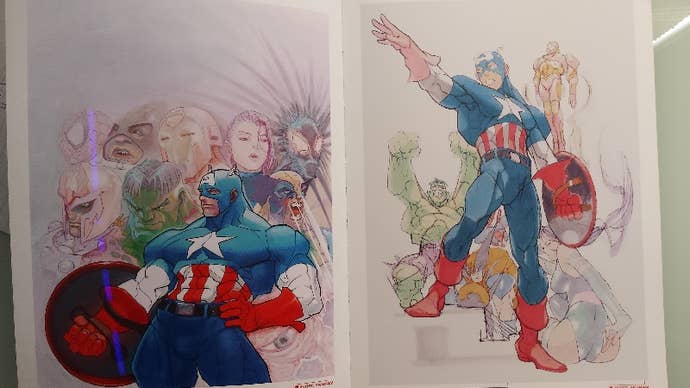
However, there have been times when cultural sensitivity plays a factor, and work will occasionally get cut on the trip across the Pacific. "In Mega Man: Official Complete Works, there was an image of Gutsman from a Mega Man racing game that needed to be changed. In the original he was making a motion with his arm that means nothing in Japan, but in the West it’s a rude gesture (I’ll leave to your imagination which one). So, we had to swap out the artwork for an alternate version that had been used in the west." He continues that, "there’s also a case in the Okami art book where there was a map that featured some design similar to swastikas (I believe they represented windmills). So that art also had to be edited."
The final bosses of art book publishing, though, come down to two classic gaming problems: the logistics of localization and the terrible entropy of losing materials over time. "Often our books are based on long JRPGS, or cover a long-running series of multiple games," he says, "so we can’t exactly play through everything to get the right terminology." Aid can come, though, he tells me. "In these cases getting localization data from the publisher is a huge help. We’ve had some great assistance over the years from people like Atlus, Sega, Platinum, Xseed, and of course Capcom." The other problem is not only larger for the archivists of the world, but also the everyman because it can affect keeping a book in print. "We have had a couple books where the original game publisher has gone bankrupt, so we haven’t been able to extend our contract once it ran out. Though sometimes IPs do get purchased by someone new, so hope isn’t lost forever."
But the struggles have been worth it. Udon’s output is wide and varied, and they’re continued success is good for the niche collector in all of us. It’s hard to say that an art book explosion is right around the corner for the average Call of Duty player. For the rest of us, though, having that extra piece of a game world that we know and love is good enough.

